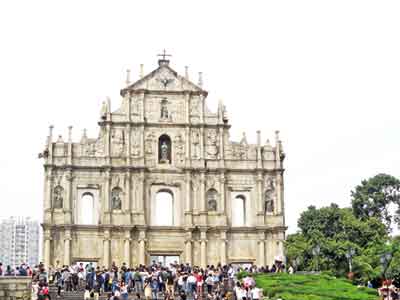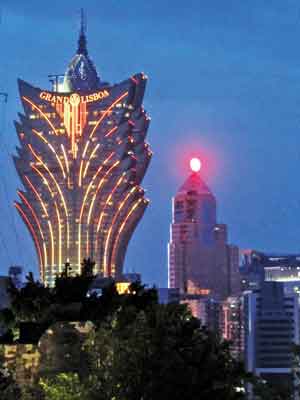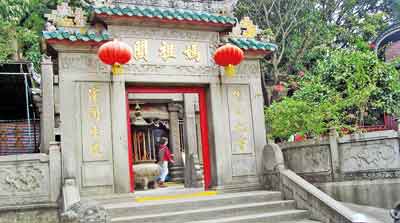Yes, there’s history and culture too in Macau, not just gambling

Only the facade: Ruins of St. Paul’s. Pix by Menaka Wijesinha
It was the first European trading post on the Chinese mainland – established by the Portuguese, who then controlled it as one of their overseas colonies from the mid sixteenth century until 1999 when it was handed back to the People’s Republic of China.
This is Macau, a place where architectural, cultural and culinary influences from Europe and the Orient met, mingled and married. You can see here baroque Catholic churches reminiscent of Lisbon as well as typical Chinese temples like the famous and probably the oldest – the A-Ma temple situated in the parish of Sao Lourenco. You can indulge in typical Portuguese foods ranging from Pastel de nata (Egg custard tarts) and Peixaassade (baked cod), African chicken flavoured with coconut cream and spices from Portugal’s former colonial possessions in Africa and the Indies – plus exotic Chinese delicacies like char siubao (steamed barbecue pork buns),ha gow (“shrimp bonnets”) and siumai (steamed pork and shrimp dumplings).
On my first visit to Macau in the early nineties, when we were living in Hong Kong, the thirty square kilometre enclave was still a Portuguese administered colonial backwater. Today grandiose and gilded gambling palaces bathed in neon lights dominate the skyline of what has become in effect the gambling capital of the world. Macau is a popular tourist destination- it attracted a staggering 30 million tourists in 2016. This horde of visitors was fuelled no doubt by Macau’s reputation as the world’s largest gambling hub. It is often referred to as the Las Vegas of the East – a poor comparison, since today Macau rakes in much more income from gambling than does Las Vegas!

One of Macau’s many casinos
Baccarat and poker aside, Macau is home to some important historic sites that are well worth a visit. Since 2005 the historic centre of Macau with over 20 important sites has been included in the UNESCO World Heritage list.
We marvelled at the majestic ruins of St Paul’s church – built in the 17th century by the Jesuits and at that time one of the largest churches in Asia. The complex was destroyed by fire in 1835 leaving only the intricately carved façade of the church standing – but the edifice constitutes one of Macau’s best known landmarks.
Another sight well worth visiting is the A-Ma temple, built in 1488 during the Ming dynasty. In existence as a place of worship long before the arrival of the Portuguese, the temple is dedicated to Mazu the Chinese goddess of the sea. You can walk among the different pavilions here, admire the delicate statue of Kuanyin, the Buddhist female Bodhisatva or goddess – quite different to the modern 60 foot (20 metre) bronze statue of Kuanyin standing on a lotus shell built on an artificial island in Macau harbour – and with the scent of incense from the spirally coiled incense sticks wafting through the complex, you can observe the local worshippers making their offerings of fruit, food and joss sticks at the various shrines.
The Macau Museum was for me a must see. Located within the former Fortress of Macau, it has three storeys – the first showing the history of the Macau region as well as the parallel development of European and Chinese civilisations. The second floor houses exhibitions of Macau’s festivals and art, including a short film about the fisher-folk of Macau – while the top floor is devoted to contemporary Macau but includes exhibitions of the major industries that flourished here during colonial days – like the manufacture of fireworks, matches and incense sticks. When we were children, I remember all the “rathing-nga”we used to light at Christmas and New Year were mainly “Yick Loong Double Duck” brand fireworks from Macau!

From the Ming Dynasty: The A-Ma temple built in 1488
Getting to Macau from Colombo is easy – one can combine it with a visit to Hong Kong, to which Sri Lankan Airlines and Cathay Pacific fly directly. After a few days spent in Hong Kong you can take the convenient Turbojet ferry from the Macau ferry terminal on Hong Kong Island. You will need a double entry visa for Hong Kong and a single entry visa for Macau. Information about visas can be obtained from the Chinese embassy Colombo – see http://lk.china-embassy.org/eng/lsyw/visaaffairs/.
You may not be interested in gambling away your money in Macau’s casinos. But if it is history, culture and cuisine you are after, consider a visit to Macau.


